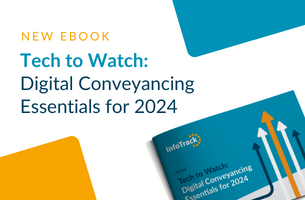Posted by Nigel Wallis, director of Legal Futures Associate O’Connors Legal Services

Wallis: Firmly optimistic about the prospects for the Bar
Martin Luther King Jr said the ultimate measure of a person is not where they stand in moments of comfort and convenience, but where they stand at times of challenge and controversy.
These words should echo round the chambers of the 17,000 or so practising barristers in England and Wales as they face, arguably, their greatest time of challenge and controversy since advocates first took up arms in the early 13th century.
The relentless shake-up of legal services regulation, the decimation of legal aid, the march of legaltech, the rise of public access instructions and the current stagnation of the courts system are greatly impacting the way barristers source, manage and deliver their work.
The financial impact of this for some, and possibly for many, will be brutal and irreversible.
So, where will barristers stand, individually and collectively, at this time of unprecedented challenge and controversy? And how can they innovate, not only to survive, but to expand their reputation as the world’s pre-eminent Bar?
A suggested starting point would be to look across at the evolution (perhaps revolution) that has been taking place in the solicitors’ profession.
Over the last decade or so, it has become evident that the most successful law firms have been those that have a high degree of control over the contractual relationship with their clients.
So, we have seen law firms progressively moving away from referrer arrangements towards investment in refreshing brands, re-structuring operating models, gearing up resources, increasing digital marketing and making a slow but discernible return to the high street.
We are now starting to see a growing number of barristers focusing on modernising the way they do business, particularly as financial pressures rub the shine off the traditional chambers model.
Common factors seem to be a desire to reduce central overhead costs, to become more market facing, and to develop business models which allow them to be more competitive in the legal services marketplace. Some also have an eye on a chance to create capital value.
In the last five years or so, the Bar Standards Board (BSB) has made great strides to facilitate (even stimulate) this entrepreneurial activity, by giving the regulatory freedom for barristers and others to form entities.
As many in the sector will know, the BSB can now authorise two distinct types of entities: authorised bodies, which must be fully owned and managed by authorised individuals (i.e. lawyers with current practising certificates); and licensed bodies (or alternative business structures, ABSs), which can be owned and managed jointly by authorised individuals and non-lawyers.
It would be fair to say that the take-up of entities so far has been unspectacular but steady. Most entities created thus far have been incorporations of the self-employed practices of individual barristers, where the individual barrister is the sole owner of the entity or a joint owner with their spouse.
The few chambers that have embraced the concept have largely sought to replicate the traditional chambers model, with the associated barristers remaining self-employed and with central overheads being funded by way of fee contributions.
Our belief is that things are about to change – and change radically and quickly.
We anticipate the emergence of genuine ‘bar firms’ that emulate solicitors’ firms. These bar firms will employ staff and barristers, their stakeholders will share risks and rewards, and, over time, they may attract equity investment and capital value on sale.
How then might bar firms benefit from the experiences of their law firm cousins?
Understanding the allocation of risk and reward
Working with law firms over many years, we have seen the collective power of a group of individuals working together with a view to profit, and how the pooling of group resources and intellectual capital can bring out the best in each individual.
But sharing risk and reward is likely to be an alien experience for many barristers. Some will be enticed by the prospect of profit shares and potential capital upside but, when push comes to shove, will find it hard to take the required entrepreneurial leap, put their hard-earned cash on the line and accept the uncertainties of collective decision-making.
Tip one: Keep the core ownership of your entity tight. It is best to have a small number of similar-minded, risk-oriented individuals owning your entity vehicle and find other positive ways to incentivise and reward the involvement of others.
Getting the legal structure right
Traditionally, law firms were structured as sole practitioners or unlimited partnerships. Over the last 20 years or so, this model has declined in popularity as the perils of business life have tested the wisdom of operating with unlimited liability.
Limited liability partnerships (LLPs) and limited companies have taken their place, so it is now rare to see a new law firm set up in any other legal form. It is likely that most bar firms will adopt the same approach for their trading entities.
And, as law firms have introduce non-lawyers (mainly professional managers and equity investors) as owners or managers, there has been a strong growth of ABSs. As barristers follow suit, there is likely to be a similar growth in BSB-regulated ABSs.
Tip two: Take specialist accountancy and legal advice on the best legal structure for your entity.
Navigating the regulatory minefield
Over the years, we have been asked to support some highly innovative commercial ventures by law firms. It is not uncommon to find that the business model initially proposed to deliver the commercial venture is not viable because of the constraints of regulation.
It is, though, usually possible to find a way of re-structuring the business model to bring it clearly within regulation, or potentially take it outside the scope of regulation altogether. Much heartache can be avoided by anticipating regulatory hurdles at the start of the planning process.
Tip three: Take specialist legal advice on the regulatory status of your proposed business model to avoid going up blind alleys and wasting time and money.
Testing the financial modelling
However exciting a business model may appear, it is essential to prepare financial forecasts with realistic sensitivity analysis to understand its true financial impact.
If your forecasts are prepared internally (which is a good idea, by the way, because you are more likely to understand them), it would be wise to have them thoroughly stress-tested by external accountants who are experienced in the legal sector.
They are likely to have a good awareness of the special market forces impacting the models and will help you temper any unrealistic optimism.
Tip four: Know your numbers inside out before you take any steps formally to engage with stakeholders, funders and other third parties.
Clarifying how conflicts will be managed
Individual barristers within the same traditional chambers are very adept at managing conflicts of interest. Once barristers are working together and sharing profits as LLP members or co-shareholders, the issue of conflicts becomes inherently more complex.
Conflicts need to be anticipated and considered very carefully as part of any entity project. The development and enforcement of sophisticated conflict management protocols is therefore essential.
Tip five: Run exhaustive scenario tests to make sure future conflicts can be identified and managed and will not hole your proposed entity below the waterline.
Securing professional indemnity insurance
The introduction of BSB entities has already impacted Bar Mutual and the wider professional indemnity insurance markets, which have generally responded positively.
Barristers working together in an entity structure will have a very different risk profile to those operating in a traditional chambers model.
The growing complexity of the professional indemnity insurance market emphasises the value of engaging professional indemnity insurance brokers who truly understand the legal sector and have direct access to the whole of the market.
Tip six: Don’t leave professional indemnity insurance cover to the last minute and use a specialist insurance broker.
Getting the right funding mix for your venture
Unless all funding for a new entity venture is provided by the entity owners themselves, some external funding will be required. This could be debt (from banks or other lenders) or equity (from private equity providers or business angels) or a mixture of both.
The key to getting the funding mix right is in understanding the drivers of the funders and how these will impact the structure of the entity and its ability to operate in the way the owners want it to.
Tip seven: Be clear on what type of funding is needed in the foreseeable future and seek to align the interests of the entity owners and the funders.
Finally, we are firmly optimistic about the prospects for the Bar in England and Wales. Its success will be determined by many factors but will include its willingness to adapt to the changing marketplace and to embrace the opportunities provided by entity regulation.












Leave a Comment